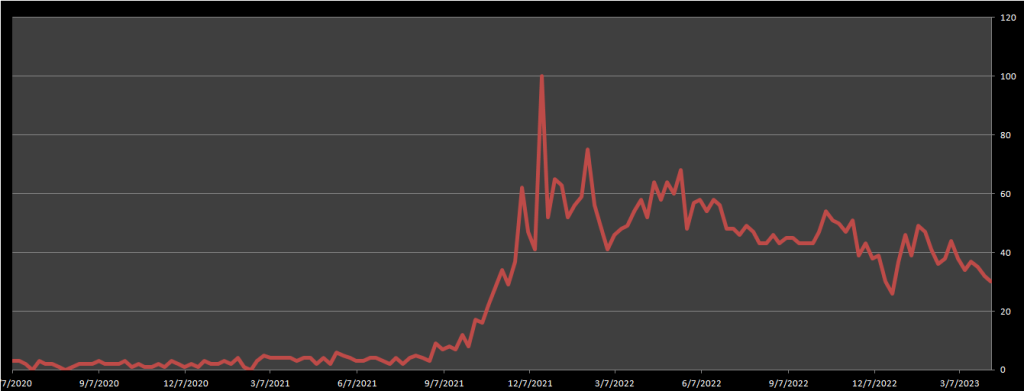
The internet has come a long way since its inception. From the static web pages of the 90s to the dynamic web applications of today, the internet has evolved significantly. However, the next phase of the internet’s evolution, known as Web 3.0, promises to be the most revolutionary yet. In this post, we will explore what Web 3.0 is, its key features, and its potential impact on the internet and society as a whole.
What is Web 3.0?
Web 3.0, also known as the decentralized web or the semantic web, is the next evolution of the internet. It is characterized by the use of decentralized technologies such as blockchain, peer-to-peer networks, and distributed storage to create a more open, transparent, and secure web. Unlike the current web, which is primarily controlled by a handful of large corporations, Web 3.0 is designed to be more democratic and decentralized, giving users more control over their data and online identities.

Key Features of Web 3.0
- Decentralization: Web 3.0 is built on decentralized technologies such as blockchain, which allows for a more distributed and secure web. This means that users can store their data and interact with others without relying on centralized servers or platforms.
- Interoperability: Web 3.0 is designed to be more interoperable than the current web, allowing for seamless communication between different applications and platforms.
- Smart Contracts: Web 3.0 includes the use of smart contracts, which are self-executing contracts with the terms of the agreement between buyer and seller being directly written into lines of code.
- Artificial Intelligence: Web 3.0 is designed to be more intelligent than the current web, with the use of advanced algorithms and machine learning.
- Personalization: Web 3.0 allows for more personalized experiences, with the use of user data and artificial intelligence to create tailored content and recommendations.
Potential Impact of Web 3.0
Web 3.0 has the potential to revolutionize the internet and society as a whole. Here are some of the potential impacts of Web 3.0:
- Decentralization: Web 3.0’s decentralized architecture could potentially disrupt the current internet landscape, which is dominated by a few large corporations. By removing the need for intermediaries, Web 3.0 could create a more level playing field for individuals and small businesses.
- Privacy and Security: Web 3.0’s decentralized architecture could also lead to greater privacy and security for users. By eliminating the need for centralized servers and platforms, users can have more control over their data and identities.
- New Business Models: Web 3.0’s decentralized architecture could also give rise to new business models that are more democratic and decentralized. For example, blockchain-based marketplaces could enable peer-to-peer transactions without the need for intermediaries.
- Improved User Experience: Web 3.0’s personalized experiences could also improve the user experience, with tailored content and recommendations that are more relevant to each individual user.
- Greater Innovation: Web 3.0’s decentralized architecture could also foster greater innovation, with more developers able to build on top of open protocols and create new applications and services.
Challenges and Limitations
While Web 3.0 has great potential, there are also several challenges and limitations that must be overcome. These include:
- Adoption: Web 3.0 is still in its early stages, and adoption is currently limited. In order for Web 3.0 to realize its potential, it must be adopted by a critical mass of users and developers.
- Technical Complexity: Web 3.0 is also more technically complex than the current web, requiring specialized knowledge of decentralized technologies such as blockchain and peer-to-peer networks. This could limit the number of developers and users who are able to fully participate in the Web 3.0 ecosystem.
- Regulation: The decentralized nature of Web 3.0 could also pose regulatory challenges, particularly in areas such as taxation, anti-money laundering, and consumer protection.
- Scalability: Finally, Web 3.0 faces significant scalability challenges, particularly with respect to blockchain-based technologies. In order to support widespread adoption and usage, Web 3.0 must find ways to address these scalability challenges.
How to Get Involved in Web 3.0
Despite the challenges and limitations, Web 3.0 represents a significant opportunity for developers, entrepreneurs, and investors. Here are some ways to get involved in Web 3.0:
- Learn: The first step in getting involved in Web 3.0 is to learn about decentralized technologies such as blockchain and peer-to-peer networks. There are many online resources available, including blogs, forums, and online courses.
- Build: Once you have a basic understanding of decentralized technologies, you can start building your own decentralized applications and services. There are many open-source tools and platforms available, such as Ethereum and IPFS, that can help you get started.
- Join a Community: Web 3.0 is still a nascent ecosystem, but there are many communities and networks that are working to advance the technology. Joining a community can help you learn from others, stay up-to-date on the latest developments, and find potential collaborators.
- Invest: Finally, if you are an investor, there are many opportunities to invest in Web 3.0 projects and startups. However, it is important to conduct thorough due diligence and understand the risks before investing.
| Feature | Web 2.0 | Web 3.0 |
|---|---|---|
| Decentralization | Centralized architecture with data and control held by large tech companies | Decentralized architecture with data and control distributed across a network of nodes |
| Interoperability | Limited interoperability between different applications and services | Interoperability enabled by decentralized protocols and standards |
| Ownership | Users typically do not own their data or have control over how it is used | Users have more control over their data and online identities through decentralized identity solutions |
| Privacy | Privacy concerns due to centralized data storage and collection | Privacy-enhancing technologies such as zero-knowledge proofs and decentralized identity solutions |
| Trust | Trust in centralized authorities and intermediaries required | Trustless transactions and agreements enabled by smart contracts |
| Governance | Centralized governance by tech companies | Decentralized governance through community-led decision-making |
| Scalability | Scalability challenges with existing technologies | Scalability solutions being developed through blockchain-based technologies |
| Tokenization | Limited use of digital tokens | Digital tokens used to represent assets, currencies, access rights, and more |
| Innovation | Limited room for innovation due to centralized control | Increased potential for innovation and disruption through decentralized technologies |
Conclusion
Web 3.0 represents a significant evolution of the internet, with the potential to create a more open, transparent, and democratic web. By leveraging decentralized technologies such as blockchain and peer-to-peer networks, Web 3.0 could disrupt the current internet landscape, giving individuals and small businesses more control over their data and online identities. While Web 3.0 faces significant challenges and limitations, it also represents a significant opportunity for developers, entrepreneurs, and investors. By learning about decentralized technologies, building decentralized applications and services, joining communities, and investing in Web 3.0 projects, individuals and organizations can play a role in shaping the future of the internet.